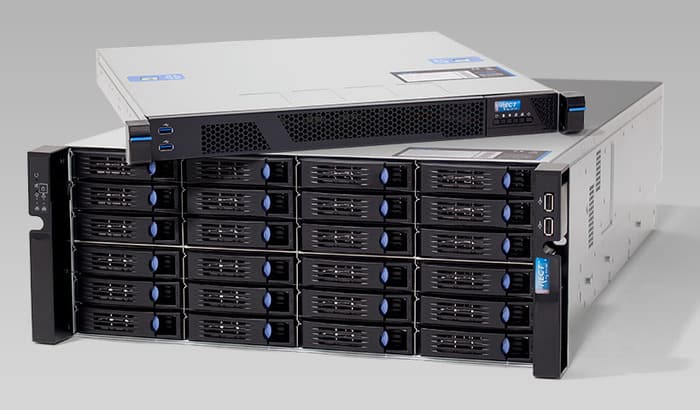High-performance computing (HPC) is essential for organizations that need to process vast amounts of data or run performance-critical applications. To meet these demands, businesses require storage solutions that can deliver high throughput, low latency, and reliable performance. Direct Attached Storage (DAS) is a storage architecture that connects storage devices directly to a server or workstation, offering significant performance benefits for HPC environments. This article will explore the performance advantages of DAS, provide case studies of companies that have successfully implemented DAS for HPC, and share tips and best practices for optimizing DAS performance.
Understanding Direct Attached Storage
Direct Attached Storage is a storage solution where storage devices, such as hard drives or solid-state drives, are directly connected to a server or workstation without using a storage network. This direct connection allows for faster data transfer rates and lower latency compared to network-based storage solutions like Network Attached Storage (NAS) or Storage Area Networks (SAN).

Performance Benefits of DAS for High-Performance Computing
High throughput: DAS can provide high data transfer rates due to its direct connection to the server or workstation, making it ideal for HPC applications that require fast access to large volumes of data.
Low latency: Since DAS does not rely on a storage network, it can offer lower latency compared to network-based storage solutions. This is crucial for HPC environments, where minimizing latency can significantly improve application performance.
Scalability: DAS can be easily scaled by adding more storage devices to the server or workstation, allowing organizations to expand their storage capacity as needed.
Simplicity: DAS provides a simple and straightforward storage architecture, reducing the complexity associated with managing network-based storage solutions.
Case Studies: Companies Successfully Implementing DAS for High-Performance Computing
Research institutions: Many research institutions utilize DAS for HPC to support data-intensive applications and simulations. For example, the Texas Advanced Computing Center (TACC) employs DAS to provide high-performance storage for its supercomputing clusters, enabling researchers to analyze large datasets and run complex simulations.
Financial services: Financial firms often rely on DAS for HPC to support latency-sensitive applications such as algorithmic trading and real-time risk analysis. For instance, a leading investment bank implemented DAS to achieve low-latency storage for its trading platform, significantly improving the performance and responsiveness of its trading applications.
Media and entertainment: Companies in the media and entertainment industry use DAS for HPC to support the processing and rendering of high-resolution graphics and video. A prominent animation studio employed DAS to enable faster rendering times for its feature films, streamlining its production workflow.

Tips and Best Practices for Optimizing DAS Performance
Choose the right storage devices: Select high-performance storage devices, such as solid-state drives (SSDs), to maximize data transfer speeds and minimize latency in your DAS setup.
Use appropriate RAID configurations: Implement RAID (Redundant Array of Independent Disks) configurations that balance performance and data redundancy, such as RAID 0 for maximum performance or RAID 10 for a combination of performance and redundancy.
Optimize storage connectivity: Ensure that your server or workstation has sufficient bandwidth to support the data transfer rates of your DAS devices. Utilize high-speed interfaces like SAS (Serial Attached SCSI) or NVMe (Non-Volatile Memory Express) for optimal performance.
Monitor and maintain: Regularly monitor the performance and health of your DAS devices to identify and address potential issues before they impact system performance. Schedule routine maintenance to ensure that your DAS devices remain in optimal condition.
Conclusion
Direct Attached Storage is an ideal solution for high-performance computing environments that require fast access to large amounts of data and low-latency performance. Its simplicity, scalability, and performance advantages make it a popular choice for organizations across various industries, including research, financial services, and media and entertainment. By implementing DAS and following the tips and best practices outlined in this article, businesses can optimize their storage infrastructure and maximize the performance of their HPC applications.
Adopting a DAS approach for high-performance computing allows companies to leverage the full potential of their hardware and software resources. As technology continues to advance, organizations can benefit from staying up-to-date with the latest developments in storage solutions and best practices, ensuring that their HPC environments remain efficient, agile, and capable of meeting the ever-growing demands of modern data-intensive applications.